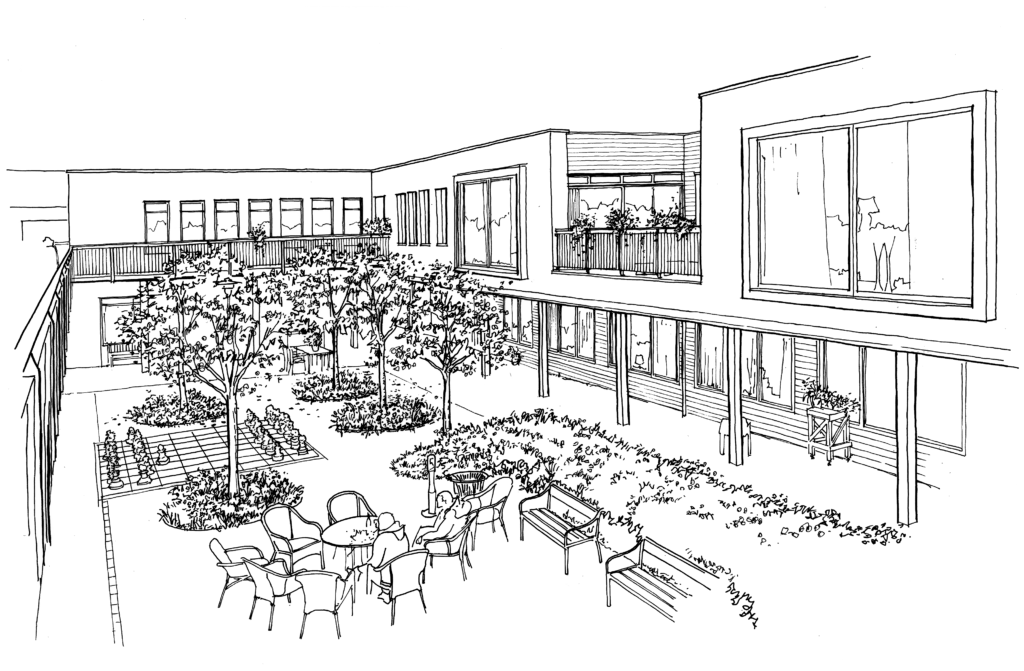Examining Hogeweyk
Transforming industrial era terraced housing into a specialist care village – can it be done?
In the future, care homes should become community hubs where they reach the people in their own home. Rather than just being an in-house service-oriented organisation, the expertise within care homes should be used to educate the public or unpaid carers how to care for an older/sick person within the community.
The Hogeweyk complex was opened in the Netherlands in 2009 and is a pioneering urban gated village designed specifically as a care facility for elderly people with dementia. It was conceived as a contrasting alternative to traditional nursing homes, providing residents with a more active and community oriented lifestyle where they live in a small self contained households which reflect family homes, do their own shopping, visit neighbours or go for a walk in the park.

The village is formed out of one and two story buildings arranged on a four acre site to form streets, squares, gardens and a park, all enclosed to allow residents to safely roam, freely accessing the supermarket, restaurant, bar and theatre. These facilities are all open to the public and serve residents of the surrounding neighbourhood which adds to the atmosphere of normality and sense of community.
The Hogeweyk approach has received international acclaim being the first dementia village of its kind and is increasingly cited as a desirable alternative to building traditional nursing homes, however few schemes have wholly implemented the household concept which is arguably the genius of the project.





